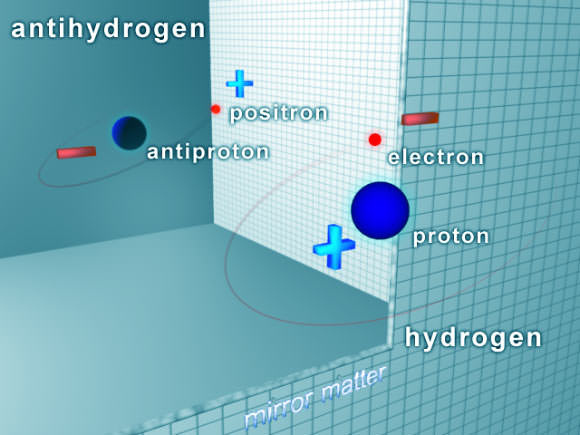The best science — the questions that capture and compel any human being — is enshrouded in mystery. Here’s an example: scientists expect that matter and antimatter were created in equal quantities shortly after the Big Bang. If this had been the case, the two types of particles would have annihilated each other, leaving a Universe permeated by energy.
As our existence attests, that did not happen. In fact, nature seems to have a one-part in 10 billion preference for matter over antimatter. It’s one of the greatest mysteries in modern physics.
But the Large Hadron Collider is working hard, literally pushing matter to the limit, to solve this captivating mystery. This week, CERN created a beam of antihydrogen atoms, allowing scientists to take precise measurements of this elusive antimatter for the first time.
Antiparticles are identical to matter particles except for the sign of their electric charge. So while hydrogen consists of a positively charged proton orbited by a negatively charged electron, antihydrogen consists of a negatively charged antiproton orbited by a positively charged anti-electron, or a positron
While primordial antimatter has never been observed in the Universe, it’s possible to create antihydrogen in a particle accelerator by mixing positrons and low energy antiprotons.
In 2010, the ALPHA team captured and held atoms of antihydrogen for the first time. Now the team has successfully created a beam of antihydrogen particles. In a paper published this week in Nature Communications, the ALPHA team reports the detection of 80 antihydrogen atoms 2.7 meters downstream from their production.
“This is the first time we have been able to study antihydrogen with some precision,” said ALPHA spokesperson Jeffrey Hangst in a press release. “We are optimistic that ALPHA’s trapping technique will yield many such insights in the future.”
One of the key challenges is keeping antihydrogen away from ordinary matter, so that the two don’t annihilate each other. To do so, most experiments use magnetic fields to trap antihydrogen atoms long enough to study them.
However, the strong magnetic fields degrade the spectroscopic properties of the antihydrogen atoms, so the ALPHA team had to develop an innovative set-up to transfer antihydrogen atoms to a region where they could be studied, far from the strong magnetic field.
To measure the charge of antihydrogen, the ALPHA team studied the trajectories of antihydrogen atoms released from the trap in the presence of an electric field. If the antihydrogen atoms had an electric charge, the field would deflect them, whereas neutral atoms would be undeflected.
The result, based on 386 recorded events, gives a value of the antihydrogen electric charge at -1.3 x 10-8. In other words, its charge is compatible with zero to eight decimal places. Although this result comes as no surprise, since hydrogen atoms are electrically neutral, it is the first time that the charge of an antiatom has been measured to such high precision.
In the future, any detectable difference between matter and antimatter could help solve one of the greatest mysteries in modern physics, opening up a window into a new realm of science.
The paper has been published in Nature Communications.


Some people think that antimatter has negative gravitational mass. I don’t buy that, but it would be nice to verify experimentally. Would this new technique help?
If antimatter did have negative gravitational mass, that would sure open up a whole new can of worms. I agree, I’d like to know.
I’m a novice. What would the ramifications of negative gravitational mass be?
It would attract anti matter and repel matter.
But anti-matter has no anti-gravity, only the charge is the opposite.
No, it is only the charge that is the opposite.
The mass is the same as hydrogen. No magical anti-gravity.
I thought so, but it was an interesting thought. Thanks for answering mewo.